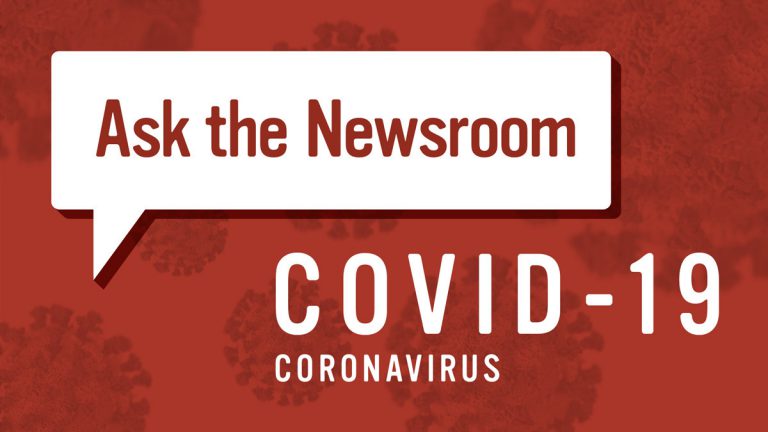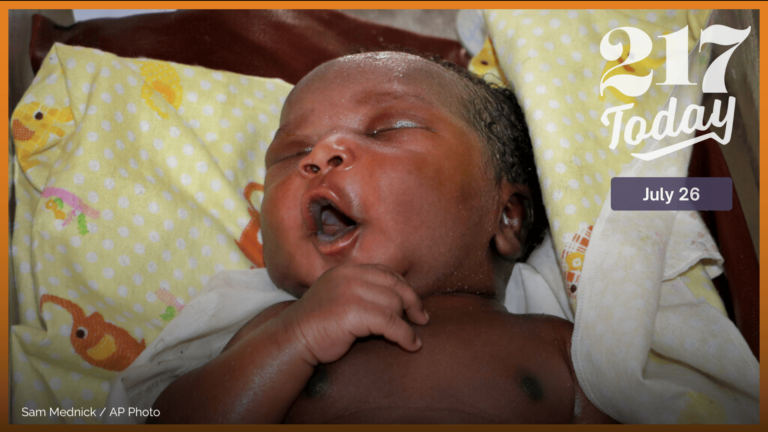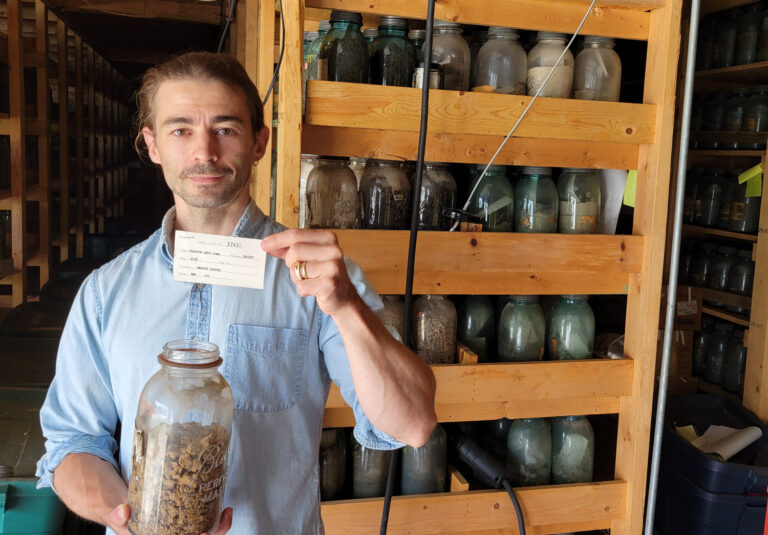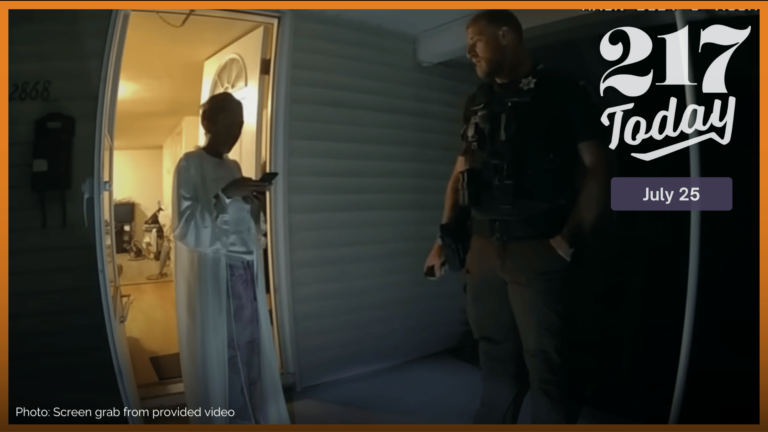The Illinois Newsroom team is answering questions to help Illinois residents navigate this unprecedented time. Have a question you want answered? Ask here.
Below you’ll find answers to questions about schools and their COVID-19 response, business and government aid during the pandemic.
Please note the information is accurate as of February 17, 2021.
Schooling
Q: If schools were closed for months in the spring, when COVID numbers were nowhere near as high as they are now, why aren’t they closed?
The Centers for Disease Control and Prevention, alongside the Illinois Department of Public Health, have been working with school officials on determining when or how they should reopen their schools.
The CDC has created indicators to help school officials with opening school decisions. These indicators show the risks of having online classes or in-person classes.
School officials say they understand there is a high risk of having their students attend school in person; therefore, many officials have decided to have online classes. Some districts have made the decision to hold hybrid classes, a mixture of online and in-person classes.
For more information on the CDC’s guidelines for back to school, click here.
– Cesar Sanchez, Illinois Public Media
Q: Will the schools be closed from now on in Illinois/Are Illinois schools going to shut down in the near future?
The Illinois Department of Public Health updated their frequently asked questions for schools page on Jan. 4.
As of now, if there are confirmed or probable cases of COVID-19 within a school, the state has left decisions for the temporary closure of a school to be made by school leaders in consultation with their local health department.
If the local health department determines that there is a risk to the school community, the school may be closed temporarily for cleaning and disinfection.
This also allows local health officials to help the school determine appropriate next steps, including whether to close for longer if needed, to stop or slow the further spread of COVID-19.
Additionally, the Illinois Department of Public Health suggested alternative strategies on their official website linked above, that are less drastic than closure, which a school may implement:
-
-
- Quarantining the affected classroom where social distancing is challenging (e.g., early childhood).
- Suspending affected classes or closing playgrounds.
- Canceling non-essential activities and meetings.
- Keeping students in constant class groups or classrooms and moving teachers routinely
between classes. - Increasing spacing between students in classes.
- Shortening the school week.
- Staggering school start and lunch/break times across year groups or classes.
-
– Tatiania Perry, Illinois Public Media
Businesses
Q: Why are Illinois casinos still open for indoor guests when Illinois restaurants are not?
Illinois is currently in Phase 4 of the Restore Illinois Plan.
According to the Illinois Gaming Board, casino gambling “may resume operations pursuant to each casino’s approved Pandemic Resumption Plan under normal business hours, limited to 50% of fire code capacity.”
Indoor dining at restaurants is permitted in regions 1, 2, 3, 4, 5, 6, 7, 8, and 9 at levels allowed in Phase 4 of the restoration plan, with occupancy limits determined by social distancing rules.
Chicago, region 11, is in a modified version of phase 4.
The city is currently maintaining occupancy restrictions at restaurants, bars, and events at 25% or 50 people per room, (whichever is fewer) according to the Illinois Restaurant Association.
– Tatiania Perry, Illinois Public Media
Q: Why should hair salons close when they are doing everything right and everyone wears a mask?
Hair salons and barbershops were open with restrictions as part of the Phase 4 reopening timeline beginning in early December.
Nail salons, spas, massage therapy clinics, waxing centers and tattoo parlors are among many other cosmetics-related businesses allowed to operate at 50% capacity during the new phase.
Though allowed to open, services should be limited to ones that “can be performed while customers and employees are wearing a face covering over their nose and mouth,” according to the Illinois Department of Commerce website.
However, various regions of the state are in different stages. You can find a map here.
– Tatiania Perry, Illinois Public Media
Government Aid
Q: Will the moratorium on evictions be extended?
Nationwide, President Biden has extended an eviction moratorium until at least March 31, according to the Center for Disease Control and Prevention.
Biden proposed the ‘American Rescue Plan’ to Congress to address the financial needs of both renters and landlords across the country.
“If we fail to act, there’ll be a wave of evictions and foreclosures in the coming months as this pandemic rages on because there’s nothing we can do to change the trajectory of the pandemic in the next several months,” Biden said at the White House on January 22.
In his remarks on January 22, Biden cited the 14 million Americans who are behind on rent and in danger of eviction. One in five households across the U.S. were behind in rent as of Dec. 2020, according to the U.S. Census Bureau.
Biden’s action goes beyond Gov. Pritzker’s extension of the moratorium on evictions until Feb. 6, as laid out in an executive order.
– Farrah Anderson, Illinois Public Media
Q: Are P-EBT benefits continuing for children who are still fully remote?
According to the Illinois Department of Human Services website, applications for the Pandemic Electronic Benefit Transfer (P-EBT) benefits are not currently being accepted.
However, the website states that P-EBT for the 2020-2021 school year will be made available once a final decision is made by the administration.
P-EBT benefits allow children ages 3 to 17 and 19 to 22 (if they are in high school) to receive $5.70 in daily meal costs, if they lost access to free or reduced price meals, due to school closures from the pandemic.
– Marissa Plescia, Illinois Public Media
Q: What is the current administration’s plan for contact tracing job opportunities to become available?
In May, Illinois Gov. J.B. Pritzker and the Illinois Department of Public Health announced a plan to hire roughly 3,800 contact tracers in the state.
The Chicago Tribune reported that it had still not reached that goal in early November. Gov. Pritzker was quoted on Nov. 2 as saying the state should hire more contact tracers if it continued to experience such a high number of cases.
IDPH has a contact tracing interest form in the Contact Tracing section of its website, where it says the hiring of contact tracers will “depend on the needs of the local public health authorities and by region of the state”. Completing this form does not represent the promise of a job or job interview with the State of Illinois or any other entity.”
The DuPage County Health Department has a recruitment form for COVID-19 emergency response positions, which includes case investigation/contact tracing positions.
The Kane County Health Department links to the IDPH’s interest form on its website, and it also suggests emailing its human resources department (HRMcorrespondence@co.kane.il.us) with any questions regarding employment.
The Kendall County Health Department didn’t have a specific directive for people interested in becoming contact tracers, but it did list a temporary full-time position as a community resource specialist.
The Will County Health Department also directed to the IDPH’s interest form on its website. It does have a general application as well.
Additionally, a variety of contact tracer positions are posted on Indeed, a jobs website, in the Chicagoland area.
– Gavin Good, Illinois Public Media







